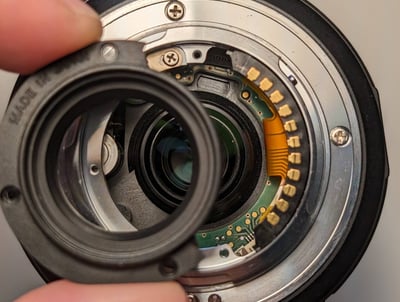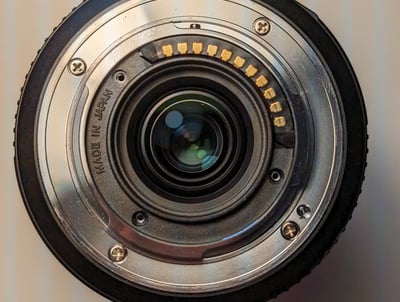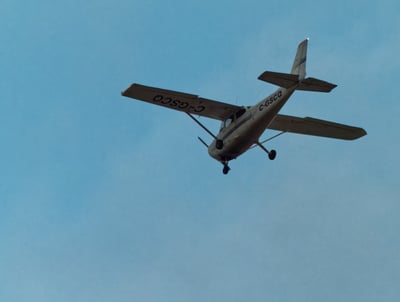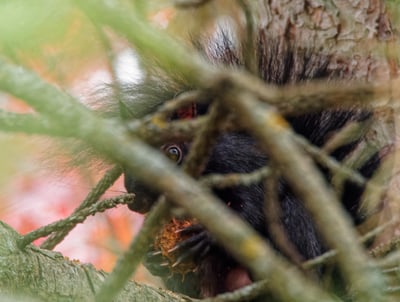Supertelephoto Fun For Cheap
Olympus is holding out on us...
Milan Svitek
Light and compact, the Olympus 75-300mm f/4.8-6.7 II is a much-loved budget telephoto in the Olympus world. The addition of a teleconverter takes it to new lengths.
Natively, neither the MC-14 nor the MC-20 are able to mount to the 75-300mm, however, a simple modification makes it possible. Is it a good idea?










Three screws are all that stand between you and 420mm or 600mm greatness. Carefully remove the screws holding the plastic stopper on the back of the lens and remove it. Done. The teleconverters now mount. However, there are some issues with usability to be aware of...
Issue 1: Light Loss
At 300mm f/6.7 without throwing a teleconverter into the mix, the 75-300mm f/4.8-6.7 isn't exactly a fast (bright) lens. These days an aperture of f/6.7 isn't terrible, as image sensor technology and noise removal software has reached a level where you can comfortable crank up your ISO without severe impact to image quality, but we haven't yet reached a point where it has NO impact, ESPECIALLY on smaller formats like four-thirds.
Adding the MC-14 takes you down to an ~f/9.5 maximum aperture, and using the MC-20 brings you all the way down to ~f/13! You need tons of light to shoot at a reasonable shutter speed and ISO.
Issue 2: Lens-Body Communication
Cameras talk to the lens, and the way Olympus determines if a teleconverter is mounted and its magnification is, sadly, not exactly intuitive. On officially supported lenses, there is a pin which makes contact with a sensor on the teleconverter, which basically tells the lens "hey, I'm a teleconverter" and the lens knows what to change focal length and aperture to so the camera knows what to do.
On unofficial lenses, even though you may actually be shooting at 420mm f/9.5 or 600mm f/13, the camera only gets the data directly from the lens, with no idea a teleconverter is there. It will display the incorrect focal length and aperture. Not the end of the world, but the IBIS unit is going to give you a bad time. It won't actively fight you like with some adapted lenses using their own OIS, but it won't compensate for the full movement of the image frame, leading to it being extremely ineffective.
Shoot with IBIS on, but imagine you have it off (boost shutter speed higher than you would normally).
Issue 3: Image Quality
A teleconverter will make any optical flaws in the lens it's attached to more evident. This is fine when you're using razor sharp pro glass like the 300mm f/4 but the 75-300mm f/4.8-6.7 simply isn't that. Its a great lens, don't get me wrong, but it has flaws. Making those flaws 40% or 100% more visible isn't doing it any favours. To get respectable levels of sharpness, you'll have to stop down, which makes issue 1 above even worse.












Conclusion: Is it worth it?
I absolutely would NOT recommend buying either a teleconverter or the 75-300 specifically to perform this modification and use them together.
However... if you already have a 75-300mm and an MC-14 or MC-20 which you use with a different lens (like the brilliant 40-150mm f/2.8 or 90mm f/3.5 macro) and you just want to have some supertelephoto fun, this definitely gets a big thumbs up from me. Its just FUN for such a simple little mod. Its fully reversible and, as long as you're reasonably careful, safe. You CAN get good results from the combo of 75-300 and 1.4x teleconverter, though the 2x takes all the issues mentioned above and makes them even worse.
Below is a little gallery of SOOC snapshots taken with the 75-300mm f/4.8-6.7 and MC-14 1.4x teleconverter showing that it IS possible to get reasonably acceptable results with the combo. You get the standard benefits of a teleconverter such as closer macro, increased reach, and more compression. The majority are shot at 300mm f/6.7~11 (420mm f/9.5~16 or so).
Issue 4: Physical Interference
The big one. The primary reason all lenses DON'T support the teleconverters is because the lens' rear element conflicts with the protruding front element of the teleconverter, which sits inside the mount of compatible lenses. This trick doesn't turn your 75-300 into a 105-420 or 150-600 because you can't zoom out all the way to the 75mm mark; the lenses interfere with each other at ~150mm, effectively giving you a 210-420 or 300-600 depending on whether you use the MC-14 or MC-20.
Ultimately this doesn't make much of a difference in practice, but be warned that zooming out quickly could damage the lens, teleconverter, or camera, or any combination of the three. Be careful when using this setup!

















